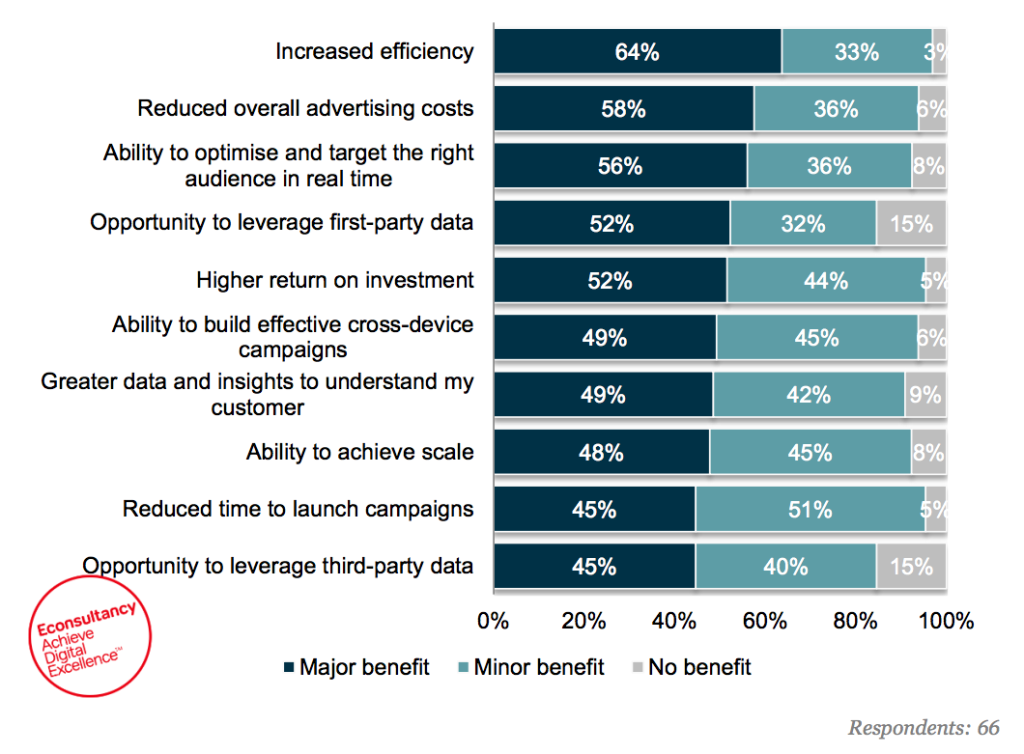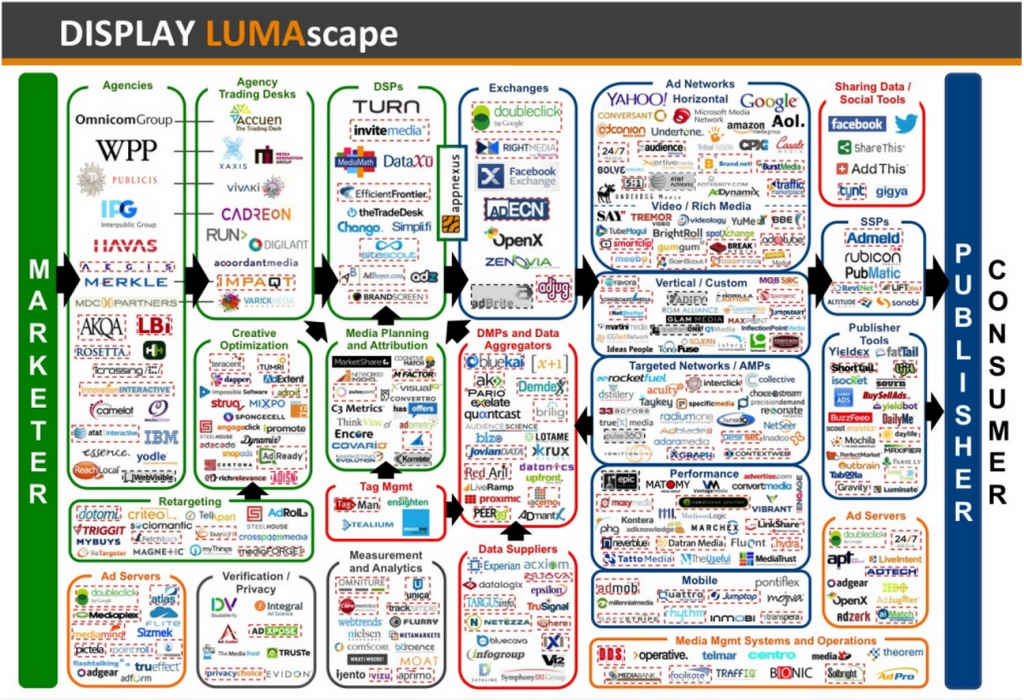If you’re a part of the digital advertising world, then you’ve probably heard of Programmatic Advertising. Programmatic advertising, programmatic buying and programmatic media are more than just buzzwords; they get real results which is why everyone is now making the switch. In 2014, global programmatic media had a spend of $21 Billion, and it’s projected that spend will reach $53 Billion by 2018. Marketers are increasing programmatic spend because they’ve realised it’s simply better compared to traditional methods of buying digital ad space. In this blog post we’ll not only discuss what programmatic advertising is, but how it’s better compared to its traditional counterpart and how it works.
What Is Programmatic Advertising?
Programmatic Advertising/Buying refers to the use of technology to automate the purchase of digital advertising space. The technology of Real-Time Buying (RTB) allows you to set parameters such as bid price, target interests, audience demographics, etc… and will automatically bid on ad space fulfilling your criteria while remaining in your budget.
There are a variety of publishers across the web which provide the ad space that is auctioned off. Publishers are the websites that deliver the ads, and they can range from small niche websites to large corporations such as Facebook and Twitter. Even while dealing with millions of publishers and potentially hundreds of criteria for buying, the whole process of buying and selling ad space happens within 100 milliseconds; this is the beauty of programmatics.
How Will Programmatics Benefit You?
Now that you know what programmatic buying is, how can it help you?

Increased Efficiency
At the very top of the list sits “Increased efficiency”. Increased efficiency refers to the time-saving ability of programmatic buying and RTB. Instead of talking to different sales people for buying ad space, programmatic campaigns require only the information about how much you want to spend and who you want to target. From there, the programmatic software takes the driver’s seat and finds exactly what you’re looking for. What used to take hours with twenty different publishers can now take under a second with millions of publishers. Since paid-media specialists no longer need to spend as much time on the buying of ad space, time can now be used for marketing strategy and optimization.
Reduced Overall Advertising Cost
Time is money, thus increased efficiency logically reduces the cost of advertising, but it doesn’t stop there! By implementing programmatic advertising into your marketing strategy, you can target a very specific audience and reduce costs. With less people being targeted, money is only spent on individuals who are more likely to convert, and those who don’t care about your product or service do not see your ads. This reduces irrelevant impressions, which inevitably reduce your costs.
Opportunity To Leverage First-Party and Third-Party Data
Marketing, like many other industries, runs on data. Marketers are constantly collecting or buying data about consumers and their behaviours, and that data can be used in programmatics. The information you already own can be used with programmatics to reach the individuals most likely to convert. By doing this, you increase the return on investment by giving the data an additional use.
Okay, I’m in. Now what?

While it may look complicated, getting an ad from your marketing department to the consumers is straightforward. Most agencies, like Spark (hint hint), are experts at programmatics, and we are glad to help any client get into the hottest sector of digital advertising. But for now, let’s look at some of the stages between the marketer and consumer.
Agency Trade Desk (ATDs)
Agency Trade Desks directly support agencies and marketers looking to work with programmatic media. Trade desks usually work with a Demand-Side Platform (DSP) to allow marketers to bid in real-time for ad space. Additionally, ATDs are also used for management of programmatic media, giving the marketer more control of where the ad runs and who is targetted. This is why in 2012, advertising spend through trade desks in the US hit $2 billion, and the number only increased in 2013, reaching $3.3 billion.
Demand-Side Platforms (DSPs)
Demand-Side platforms are similar to Google AdWords in the sense that they are the hub for you to build campaigns and buy ad space. The major differences between DSPs and AdWords is reach and targeting. AdWords is only able to place ads within the Google networks such as Google searches, partner sites, and YouTube. DSPs, on the other hand, are able to place ads on millions of different publishers around the web. Targeting is more refined in DSPs because cookie data allows the platform to use hundred of different targeting criteria, unaccessible to AdWords.
Ad Exchanges
The next step in the process are ad exchanges, where publishers and ad networks put their inventory up for auction. Marketers, usually though the assistance of DSPs, are then able to bid for this inventory in real time; and again, it happens all in under a second. Ad space on these exchanges are usually sold by cost per impression (CPM); and at a single moment, more than 400 billion impression are up for bid on exchanges worldwide, accumulating to over 150,000 ads.
Ad Networks and SSPs
Before getting to the publishers, there remains two more middlemen: ad networks and supply-side platforms (SSPs). Ad networks purchase the ad space of individual publishers and aggregate it to put inventory all in one place. In contrast, SSPs are the tools which publishers use to get the most money for the space on their site; it’s essentially a publisher’s version of a DSP, with both platforms having the same technology behind them. Many ad networks will buy inventory directly from publishers or buy inventory off ad exchanges. The ad network then compiles the inventory together, marks up the price, and resells it for a profit.
While there are many other parts of the programmatic landscape, the areas previous listed are the cores of programmatics. With advancing technology, the buying cycle for digital ad space may continue to change. Some areas may become extinct, while new areas may emerge. The ever changing landscape of programmatics is exactly what makes it so interesting and relevant.
Implementing programmatic advertising into your marketing strategy is one of the best investments for your business. The field continues to grow in complexity, but it’s worth the challenge. If you have any questions about programmatic buying/advertising, please reach out to us for a chat.


